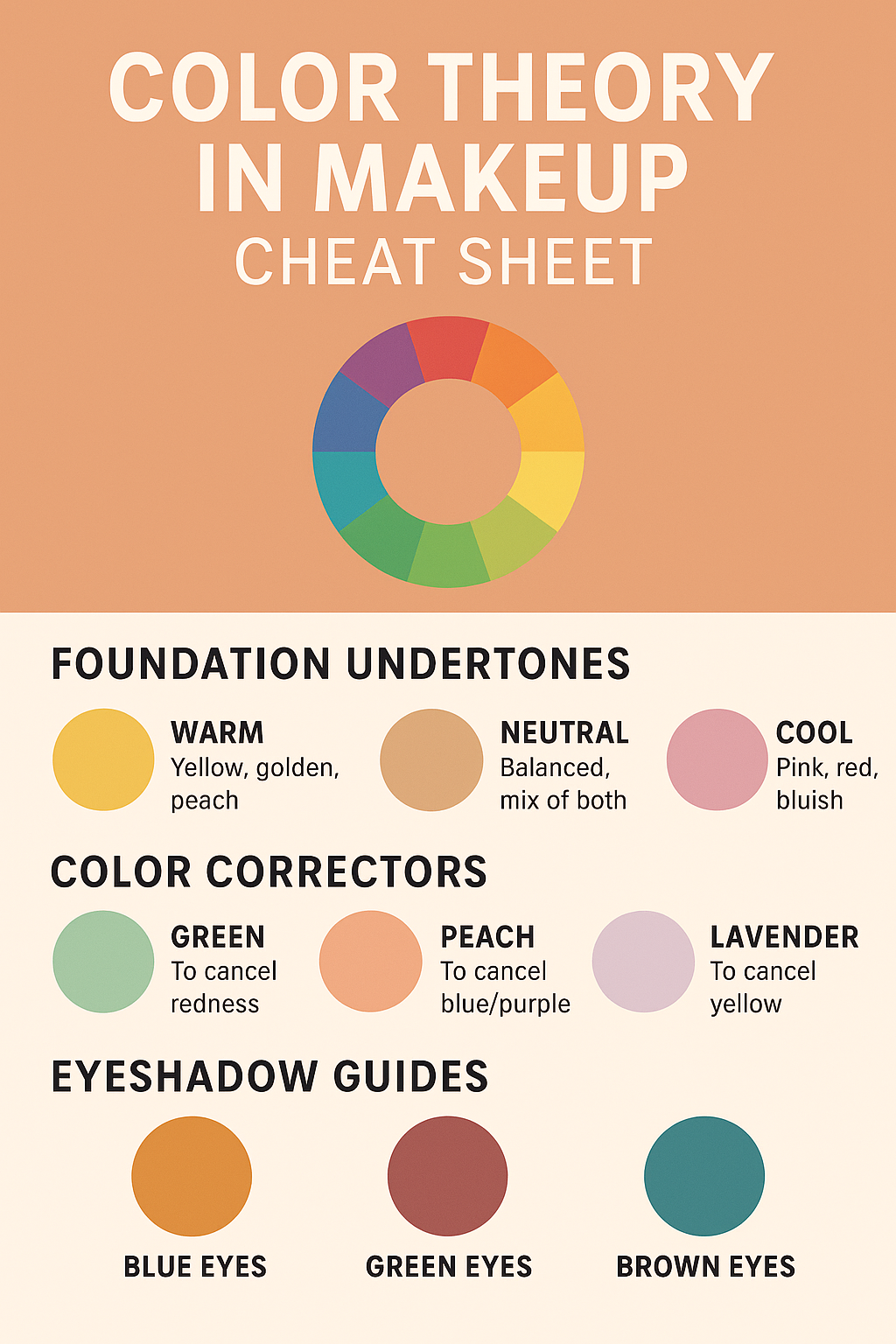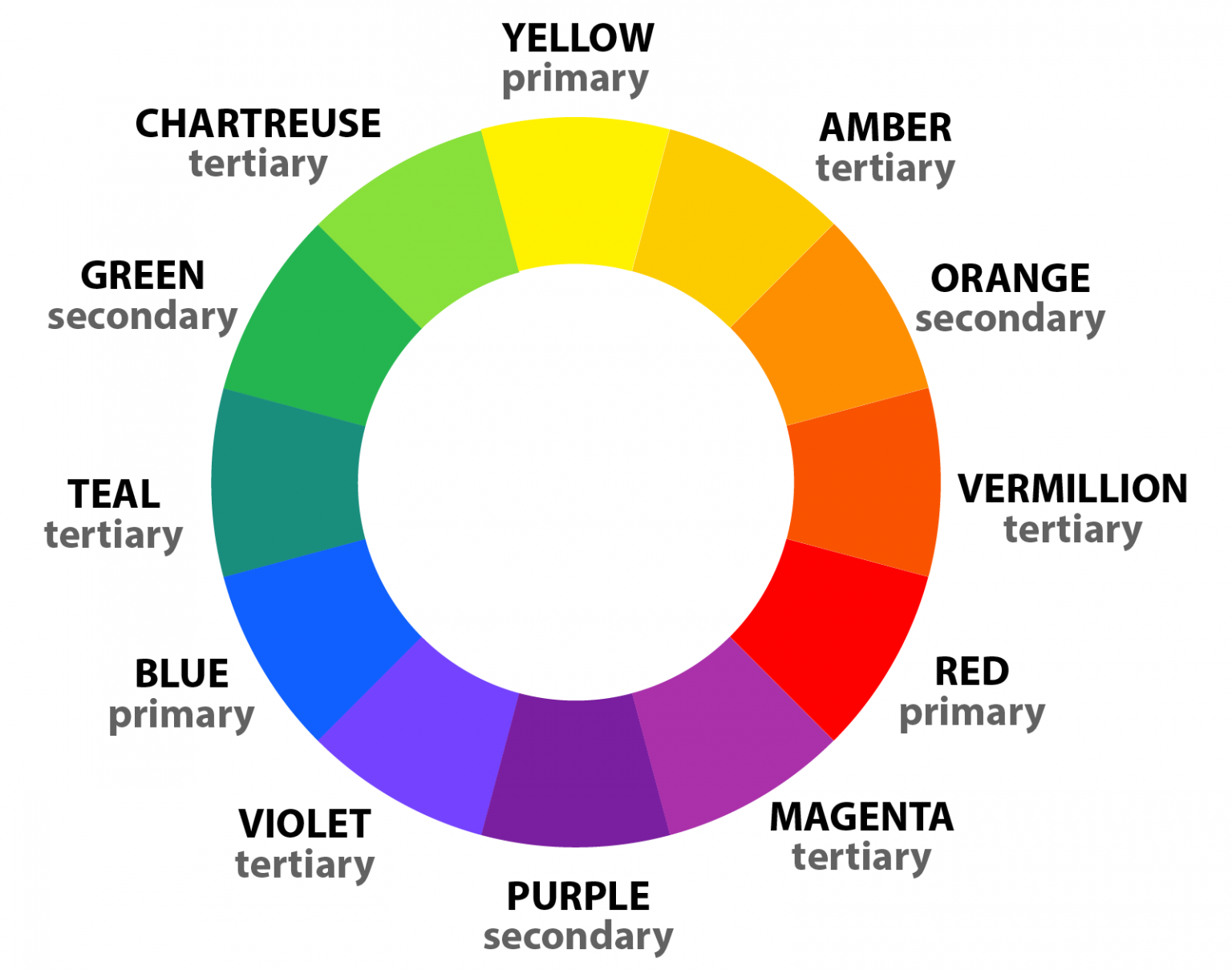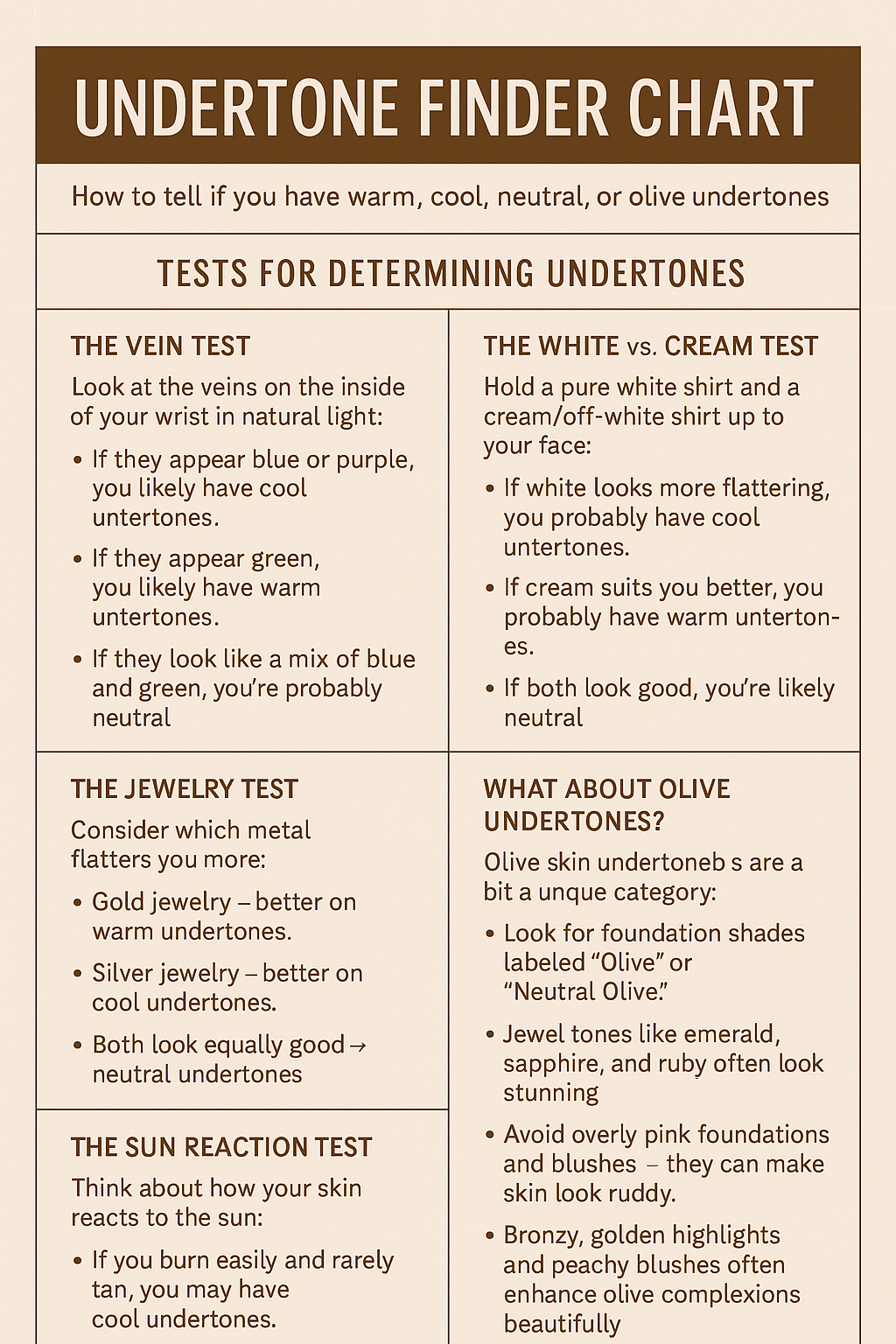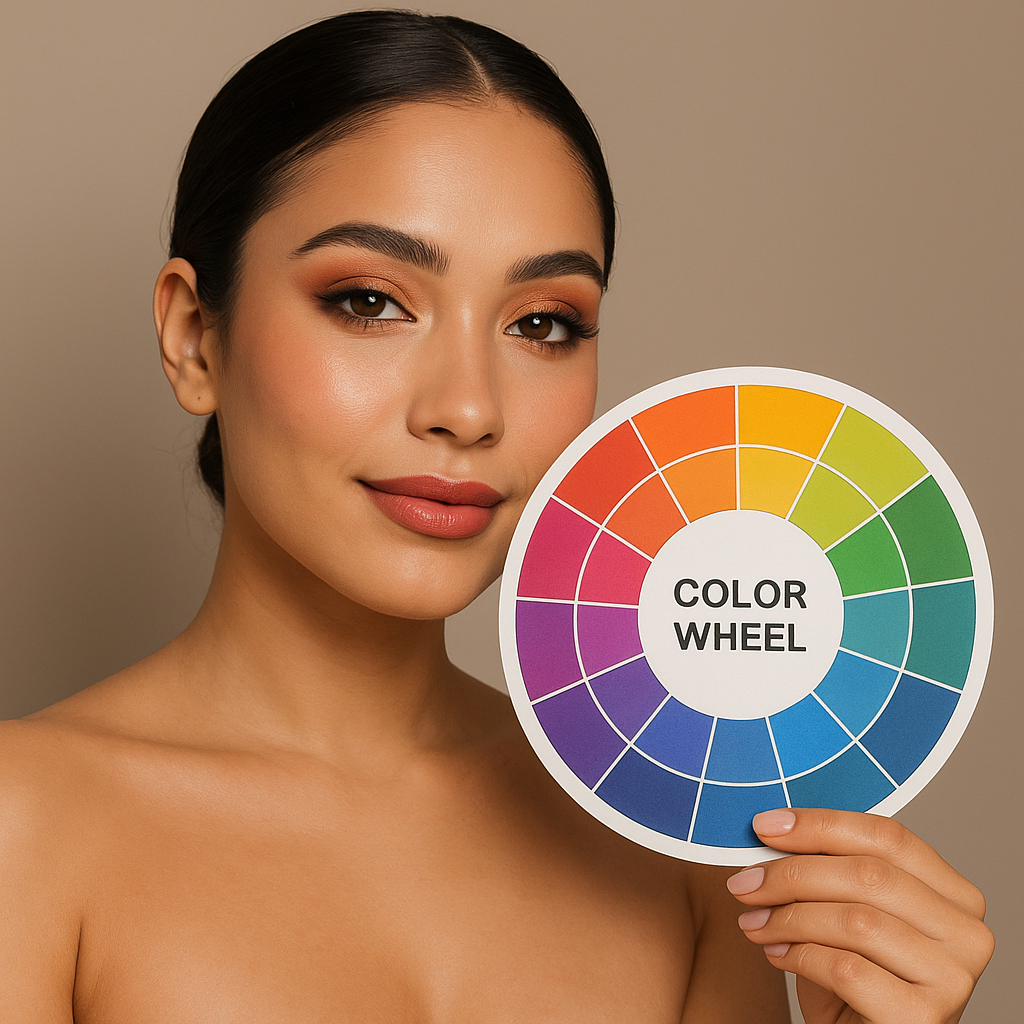Discover the power of color theory in makeup. Learn how to use the color wheel, correct discoloration, choose the best foundation shade, and create stunning makeup looks with expert color theory tips.
Introduction: Why Color Theory Matters in Makeup
When you hear the term color theory, you may think of art classes, painting, or interior design. But color theory is just as powerful in the world of beauty and cosmetics. Understanding how colors interact with one another, and how they sit on the color wheel, can completely transform your makeup routine.
From choosing the perfect foundation shade to mastering color correction techniques for redness, dark circles, and hyperpigmentation, makeup artists rely on color theory to create balance, harmony, and natural-looking results.
Whether you’re a beginner or a seasoned beauty lover, this guide will show you exactly how to use color theory in makeup. Let’s get started…

What Is Color Theory in Makeup?
Color theory is the science and art of using colors in harmony. We use color theory in interior design, and also in makeup. Color theory helps you:
- Match foundation and concealer shades to your undertones.
- Correct discoloration using opposite shades on the color wheel.
- Create flattering eyeshadow looks with complementary or analogous colors.
- Balance bold lipsticks and blush with skin tone and undertones.
- Build custom color palettes that enhance your natural features.
Simply put, makeup color theory is about using the right shades in the right places to highlight your best features and neutralize imperfections.
The Basics of the Color Wheel in Makeup

The color wheel is the backbone of makeup color theory. It’s divided into:
- Primary colors: Red, blue, yellow.
- Secondary colors: Green, orange, purple.
- Tertiary colors: A mix of primary and secondary (like red-orange or blue-green).
Makeup artists use the wheel to determine which shades complement or cancel each other out. For example:
- Green cancels red → Green concealer neutralizes acne or rosacea.
- Orange cancels blue → Peach/orange corrector hides dark circles.
- Purple cancels yellow → Lavender primer brightens sallow skin.
The Color Correcting Theory of Makeup
One of the most practical applications of color theory in makeup is color correction.
Common Color Correctors:
- Green concealer: Neutralizes redness (acne, broken capillaries, rosacea).
- Peach/Orange corrector: Brightens under-eye circles or bluish veins.
- Lavender corrector: Cancels yellow or dull undertones, brightens the complexion.
- Yellow corrector: Neutralizes purple/blue bruising or under-eye discoloration.
The key is applying a thin layer of the corrector first, blending it well, and then layering your concealer or foundation on top for a natural finish.
How to Figure Out Your Personal Color Theory
Finding your personal color theory in makeup starts with identifying your skin tone and undertone.
How to Tell If You Have Warm, Cool, or Neutral Undertones
One of the most important steps in applying color theory to makeup is figuring out your undertone. Undertone is different from skin tone (fair, medium, deep); it’s the subtle hue beneath the surface of your skin that never changes, even if you tan or lighten.
Tests for Determining Undertones
1. The Vein Test
Look at the veins on the inside of your wrist in natural light:
- If they appear blue or purple, you likely have cool undertones.
- If they appear green, you likely have warm undertones.
- If they look like a mix of blue and green, you’re probably neutral.
2. The Jewelry Test
Consider which metal flatters you more:
- Gold jewelry → better on warm undertones.
- Silver jewelry → better on cool undertones.
- Both look equally good → neutral undertones.
3. The White vs. Cream Test
Hold a pure white shirt and a cream/off-white shirt up to your face:
- If white looks more flattering, you probably have cool undertones.
- If cream suits you better, you probably have warm undertones.
- If both look good, you’re likely neutral.
4. The Sun Reaction Test
Think about how your skin reacts to the sun:
- If you burn easily and rarely tan, you may have cool undertones.
- If you tan easily and rarely burn, you may have warm undertones.
- If you tan gradually but still sometimes burn, you may be neutral.
What About Olive Skin Undertones?
Olive skin undertones are a bit trickier to classify because they fall into a unique category. Many people with olive skin struggle to find a perfect foundation match because standard “warm” or “cool” labels don’t always apply.
How to Know If You Have Olive Skin:
- Your skin sometimes looks slightly greenish or gray in certain lighting.
- Neutral foundations often look too pink, and warm shades look too yellow.
- You may tan easily, but your skin still has an earthy undertone.
- Clothing in earthy, muted colors (like olive green, mustard, or taupe) tends to flatter you most.
Makeup Tips for Olive Undertones:
Bronzy, golden highlights and peachy blushes often enhance olive complexions beautifully.
Look for foundation shades labeled “Olive” or “Neutral Olive”.
Jewel tones like emerald, sapphire, and ruby often look stunning.
Avoid overly pink foundations and blushes—they can make skin look ruddy.
Your undertone determines the foundation, lipstick, and eyeshadow shades that will look most flattering.
Here’s a printable chart to help you determine your undertones…

Color Theory in Makeup Foundation
Finding the right foundation shade is often the trickiest part of makeup. Color theory simplifies the process:
- Warm undertones → Look for shades labeled “warm,” “golden,” or “yellow.”
- Cool undertones → Look for shades labeled “cool,” “rose,” or “pink.”
- Neutral undertones → Shades labeled “neutral” or balanced between yellow/pink.
Pro Tip:
Always test foundation on your jawline, not your wrist. The shade that blends seamlessly into both your face and neck is your best match.
Color Theory in Makeup Palettes
Makeup palettes (eyeshadow, blush, contour kits) often draw directly from the color wheel.
- Complementary colors (opposites on the wheel) → Bold, high-contrast looks (blue eyeshadow with orange lipstick).
- Analogous colors (neighbors on the wheel) → Soft, harmonious looks (peach, coral, pink blush together).
- Monochromatic looks → Same color family, different depths (light pink, medium rose, deep berry).
This is why some palettes feel “balanced” while others can be overwhelming—the harmony (or lack thereof) comes straight from color theory.
Is Color Theory Applied to Makeup True or False?
True. Color theory is not a myth…it’s the foundation of makeup artistry. Every professional makeup artist uses it to:
- Balance undertones.
- Neutralize skin discoloration.
- Enhance eye color with opposite shades (orange makes blue eyes pop, gold highlights green eyes, etc.).
- Choose lipstick and blush that complement your complexion.
Without color theory, makeup choices can easily look muddy, harsh, or unflattering.
How to Use Color Theory in Makeup for Different Features
1. Eyeshadow
- Blue eyes → Warm oranges, bronzes, and peach shades.
- Green eyes → Burgundy, purple, and reddish tones.
- Brown eyes → Almost any color, especially golds and deep blues.
2. Blush
- Fair skin → Soft pinks and peaches.
- Medium skin → Corals, roses, and mauves.
- Deep skin → Rich berries, plums, and burnt oranges.
3. Lipstick
- Warm undertones → Coral, brick red, warm nudes.
- Cool undertones → Berry, pink, blue-based reds.
- Neutral → Most shades work, balance with eye/blush tones.
Practical Examples of Color Theory in Makeup
- Correcting Redness: Use green primer under foundation.
- Brightening Tired Eyes: Apply peach corrector, then concealer.
- Making Eyes Pop: Choose eyeshadow shades opposite your eye color.
- Balancing a Bold Lip: Pair red lipstick with neutral eye makeup.
Other Applications of Color Theory in Makeup
- Highlighter shades: Champagne and gold flatter warm undertones, while pearl or icy tones flatter cool undertones.
- Contour shades: Cool-toned browns mimic natural shadows better than warm orange bronzers.
- Seasonal makeup trends: Spring = pastels, Fall = rich earth tones, Winter = jewel tones, Summer = brights.
FAQs About Color Theory in Makeup

What is the color correcting theory of makeup?
It’s the method of using opposite colors on the color wheel to neutralize discoloration…like green concealer canceling redness (I, personally, use a green color corrector under makeup each day).
How do I know my undertone for makeup?
Check your veins, jewelry preferences, and how your skin reacts to sunlight. Green veins = warm, blue = cool, mix = neutral.
What is the best foundation shade for neutral undertones?
Look for shades labeled “neutral” or ones that balance both warm and cool tones without leaning yellow or pink.
Can I use color theory for bold makeup looks?
Yes! Complementary colors (opposites on the wheel) create striking looks, while analogous colors create softer harmony.
Is color theory really used in professional makeup artistry?
Absolutely. Makeup schools and professional artists use color theory as a foundation for all applications.
Conclusion: Mastering Makeup with Color Theory
Color theory is more than just an artistic principle…it’s the key to mastering makeup. By learning how shades interact, you can correct imperfections, enhance your natural beauty, and create balanced, stunning looks every time.
Whether you’re building your first makeup palette or refining your artistry, applying color theory will take your skills to the next level.
Thanks for reading Color Theory in Makeup: The Complete Guide to Flawless Application on burlap+blue.
